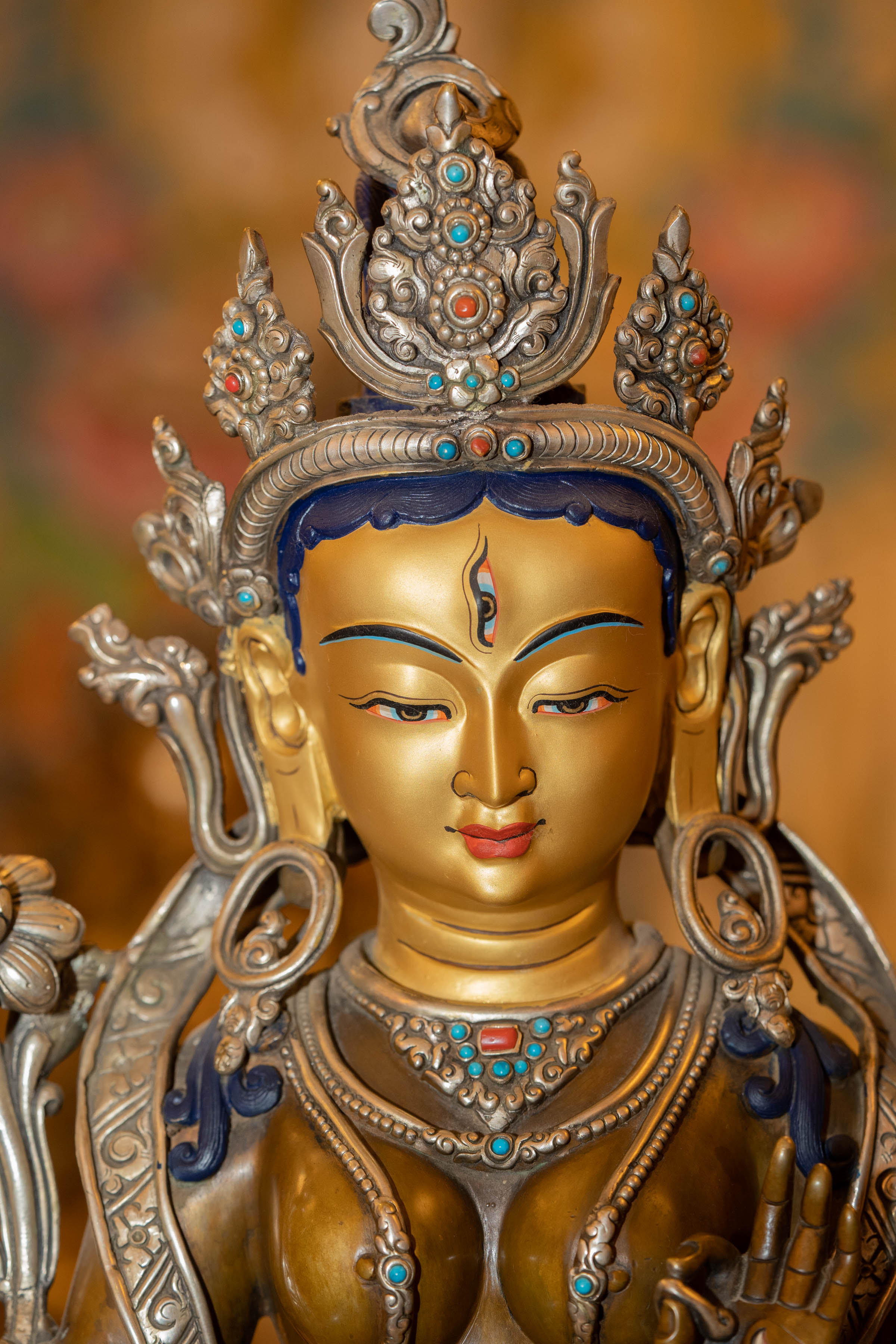Blog Post
The Dharma Wheel
This wheel is also called the dharma chakra or the dhamma chakka and is often used to represent Buddha himself. It has also universally become the symbol for Buddhism. The...
White Konch Shell
The right coiled white conch denotes deep, melodious, and sonorous sound of the Buddha’s teachings. In Buddhism, our voice does the Buddha’s work. This means that Buddhism is effectively propagated...
The victory banner
The Victory Banner symbol represents how Buddha won over the demon Mara. This demon, in Buddhism, is synonymous to passion, lust and pride. The Banner of Victory is used to...
The Pair Of Golden Fish
In older times, the two fish were drawn to symbolize the Ganges and the Yamuna rivers. It has, through interpretation, come to mean luck and fortune. It also means the...
The Treasure Vase
A vase can be filled with many different things. The vase, in Buddhism, can mean the showering of health, wealth, prosperity and all the good things that come with enlightenment.Each...
The Parasol
The parasol, in other words, an umbrella is a traditional buddhism symbol of royalty and protection from the raging heat of the tropical sun. The coolness of its shade signifies...
The Endless or Glorious Knot
Endless Knot depicts the nature of reality where everything is interrelated and only exists as part of a web of karma and its effect. Having no beginning or end, it...
The Lotus Flower
The lotus flower is an eminent symbol of Buddhism. Most statues and sculptures of the Buddhas and bodhisattvas are portrayed to sit in a meditative posture on a platform of...
8 Auspicious Symbol
Buddhism started as early as 6th BCE, when Siddhartha Gautama began preaching his teachings of suffering, enlightenment and rebirth in Nepal. Siddhartha himself was antagonistic to accept images of himself,...











